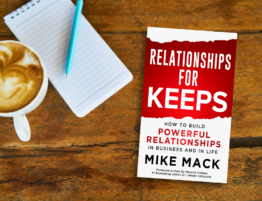Guest blog by Idris Fashan Managing Partner Red Paper Clip Writing Company www.redpaperclip.ca
I just got out of a networking event, and my ears still sting. I think most attendees feel the same way, having been battered by the plethora of canned elevator pitches being broadcast to everything that moves, platter pulled from the desk of a 1970s radio station. 
We all know when we play a part in such sins, but the embarrassment of the event forces us to look away from our past and move on.
But this isn’t acceptable. We have to tackle telling people what we are, what we do and why we do it.
As a marketer, I know it can be tough for people to try and define their “brand story.” It can seem like a daunting and painful task to ask, “What is MY story? Why my business?”
Successfully packing a well-flavored brand story is about showing people in words why you do what you do and how it affects them.
But all of that meat-and-potatoes information must be heated with passion, energy and meaning. These stories are mental morsels—things that unite and connect our sense of frustration, purpose and surroundings.
Even when I first got into writing, I didn’t really understand just how seldom these brand stories are explored by companies, but strong content can only come from a strong brand story. I cannot expect to generate great web content or great blogs without them. If brands are those stories that connect us in a common purpose, we have to get to them before we can fit those messages into other forms of content.
But brand stories are more than show and tell. They are points of ignition, firing the bellies of your buyers and future ambassadors. They drive people to believe and share your message further, and this builds on the virtues of your story. Yes, a great brand message functions like a referral program, in cycles that ever move upward as more and more people are recruited.
In a recent Success Magazine book summary, author Jim Signorelli offers a checklist and activities to follow through with that will get you on your way.
- Identify your personal brand. What are your values? What do you stand for?
- Are your current activities/marketing messages in alignment with your brand values?
- Are you trying to be all things to all people? In what areas are you stretching to do something that is outside your expertise or ability? Is that benefiting or harming your customers?
- Characterize your ideal prospect. Identify their demographics as well as their values and beliefs.
- Ask yourself: Are my values and my message in alignment with those of my prospects?
- Identify your Unique Value Proposition: the belief that you want people to identify with your brand. (A UVP is a brief statement, often only one sentence, that guides and directs the creation of all of the brand’s marketing communications.)
- Consider how you tell your story. Are you focused on Big-T truths (feelings and emotions) or on small-t truths (facts and features)? How could you rewrite your brand story to be more effective?
Creating a brand story isn’t complicated, but it requires following a few critical steps, so don’t underestimate the power of performing a storybranding exercise for your business, regardless how large or small it is. Even if you have completed a branding exercise in the last year or so, business growth may have influenced some core elements.
Ultimately, with a strong brand story, everyone can understand and share the most important of all questions: “Why?” No matter where you are, if you can answer this, you can educate, entertain and enlighten.
If you feel ready to delve deeper into storybranding principles and activities, check out Jim Signorelli’s book Storybranding: Creating Standout Brands Through the Power of Story.
And be sure to keep your eyes peeled for Red Paper Clip’s storybranding workshop coming summer 2012!








